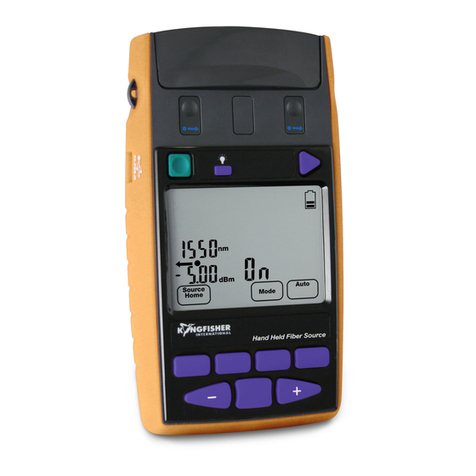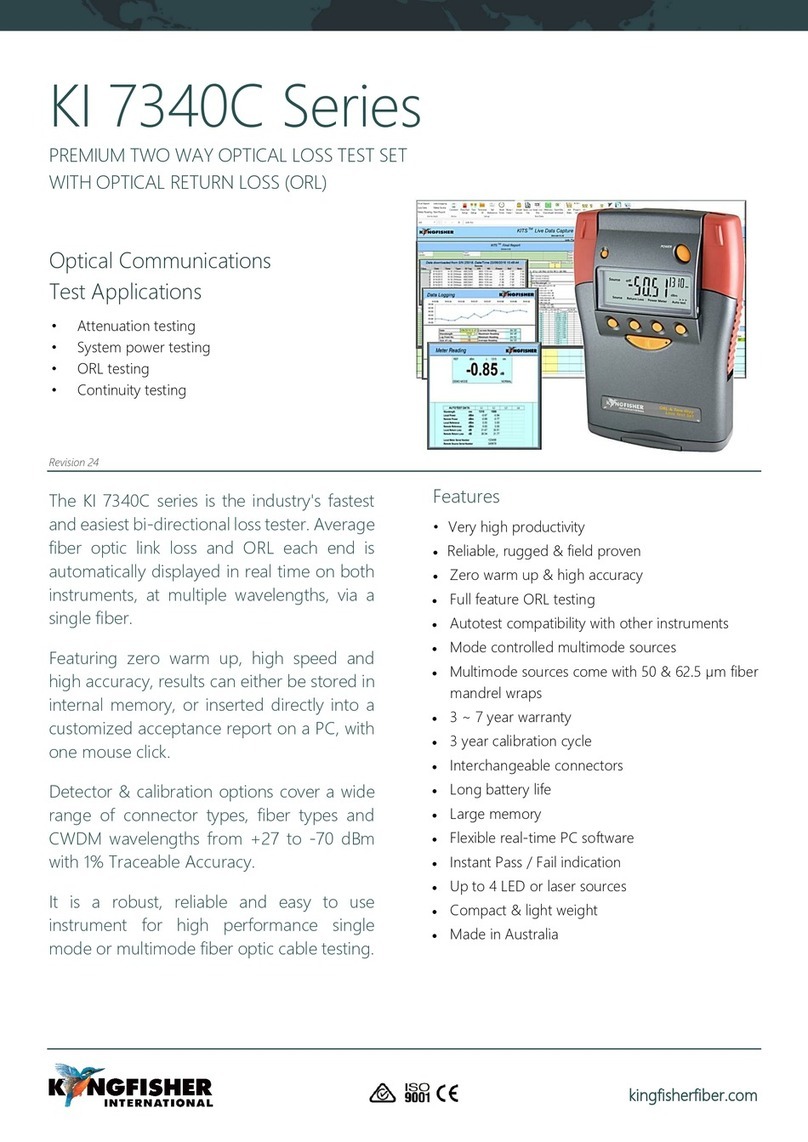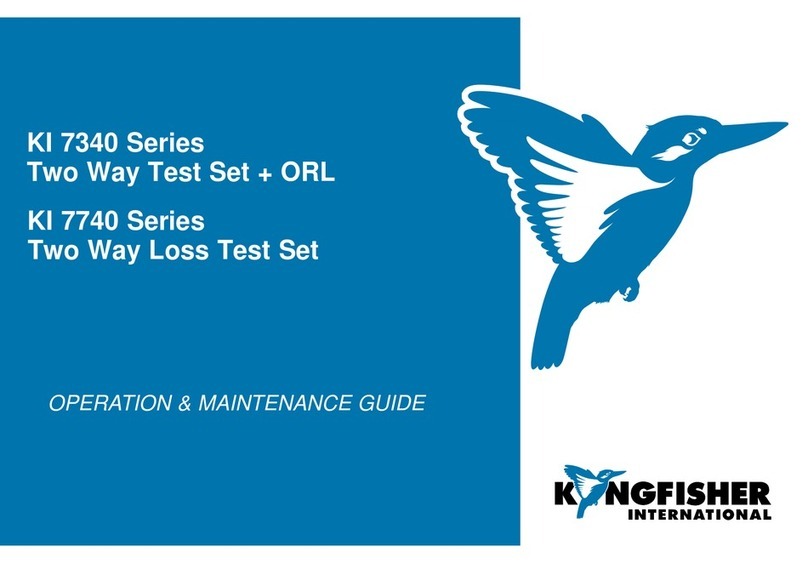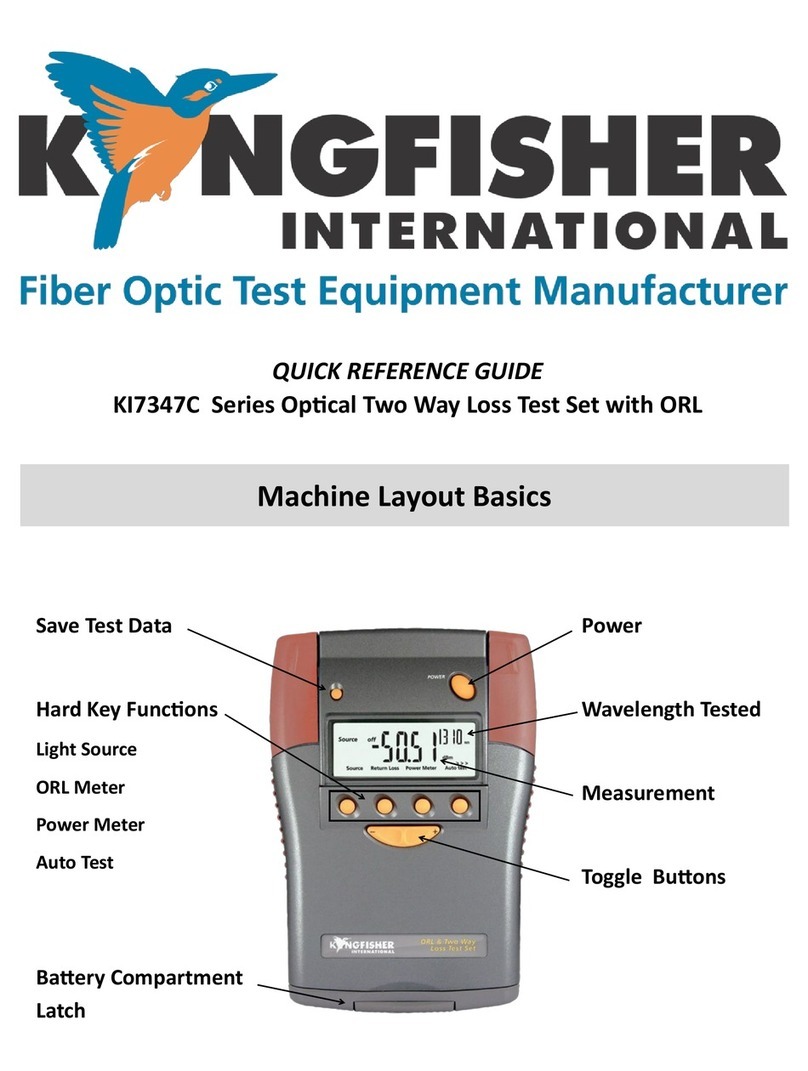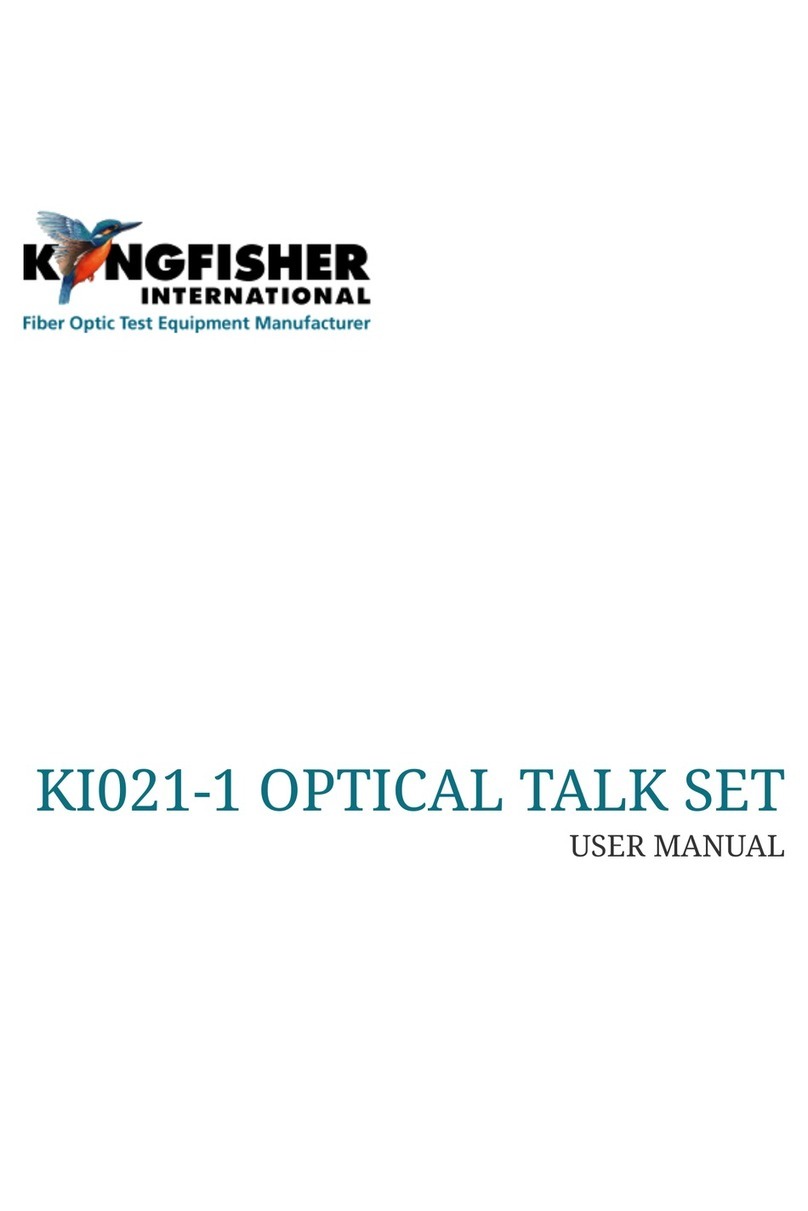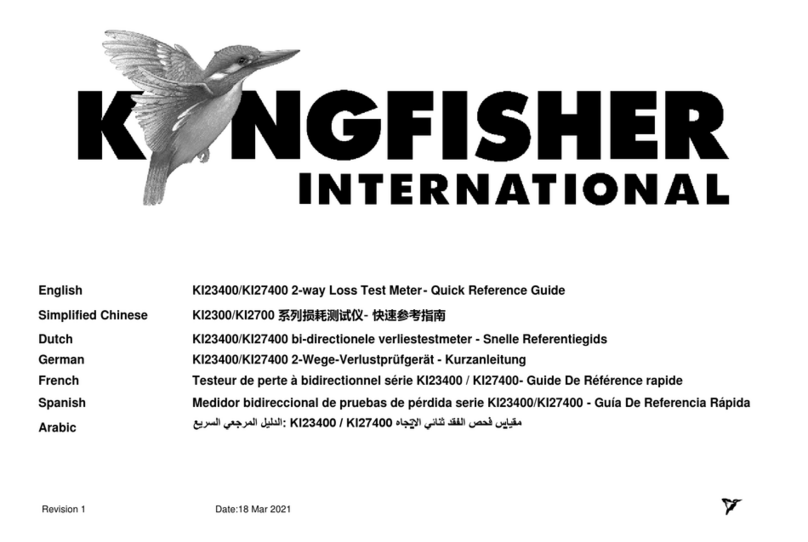
DECLARATION OF CONFORMITY
IN ACCORDANCE WITH ISO/IEC 17050:2004
Manufacturer’s Name: Kingfisher International Pty. Ltd.
Manufacturer’s Address: 30 Rocco Drive, Scoresby, Victoria 3179, Australia
hereby declares, that the products listed below
Product Name: Optical Loss Test Set, Light Source, Power Meter
Model Number: KI7300/7700 Series, KI7400/7800 Series, KI7600 Series
Product Options: This declaration covers all options of the above product(s)
comply with the essential requirements of the applicable European Directives:
•Low Voltage Directive 73/23/EEC and the EMC Directive 89/336/EEC, amended by 93/68/EEC, and carries the CE marking accordingly
•Directive 2002/95/EC on restriction of the use of certain hazardous substances in electrical and electronic equipment (RoHS)
•Directive 2002/96/EC on waste electrical and electronic equipment (WEEE)
and conform to the following standards and specifications:
MIL-PRF-28800F: 1996 Performance specification-Test equipment for use with electrical and electronic equipment, general specification
IEC 60529: 2001/ EN 60529:1993+A1:2003 Degrees of protection provided by enclosures
Optical Loss Test Set and Power Meter conform to:
IEC 61315:2005 Calibration of fibre-optic power meters
EMC Limit
IEC 61326:2002 / EN 61326-1:1997+A1:1998+A2:2001+A3:2003
IEC CISPR 11: 2004/ EN 55011:1998+A1:1999 Limits applicable to Group 1 Class B equipment
IEC CISPR 16-1:1999 Limits applicable to Class B equipment
IEC CISPR 16-2:1999 Limits applicable to Class B equipment
IEC 61000-3-2: 2005/EN 61000-3-2:2006
IEN 61000-3-3:2002/EN 61000-3-3:1995
IEC 61000-4-2:2001 / EN 61000-4-2:1995+A1:1998+A2:2001 4kV CD, 8kV AD
IEC 61000-4-3:2002/ EN 61000-4-3:2002 3V/m, 80-1000MHz
IEC 61000-4-4:2004/EN 61000-4-4:2004 1kV signal lines, 2kV power lines
IEC 61000-4-5:2005/EN 61000-4-5:2006 1kV line-line, 2kV line-ground
IEC 61000-4-6:2004/EN 61000-4-6:1996+A1:2001 3V, 0.15-80 MHz
IEC 61000-4-11:2004/EN 61000-4-11:2004 0.5 cycle/100%/each polarity
ICES-001: 2006 (Canada)
CFR 47 FCC Part 15, Subpart B (Class B) (USA)
FCC registration number: 90891
Safety
Laser/LED products conform to:
IEC 60825-1:2001 Safety of laser products-Equipment classification, requirements and user’s guide
IEC 60825-2:2005 Safety of laser products-Safety of optical fibre communication systems (OFCS)
CFR 21 part 1040.10 (USA) Performance standards for light-emitting products- Laser products
Supplemental Information:
The product was tested in a typical configuration with Kingfisher International test systems.
2007-September -14
Date
Bruce Robertson
Name
Technical Director
Title
For further information, please contact your local Kingfisher International sales office, agent or distributor.
Revision: E Issue Date: 2007- September -17
